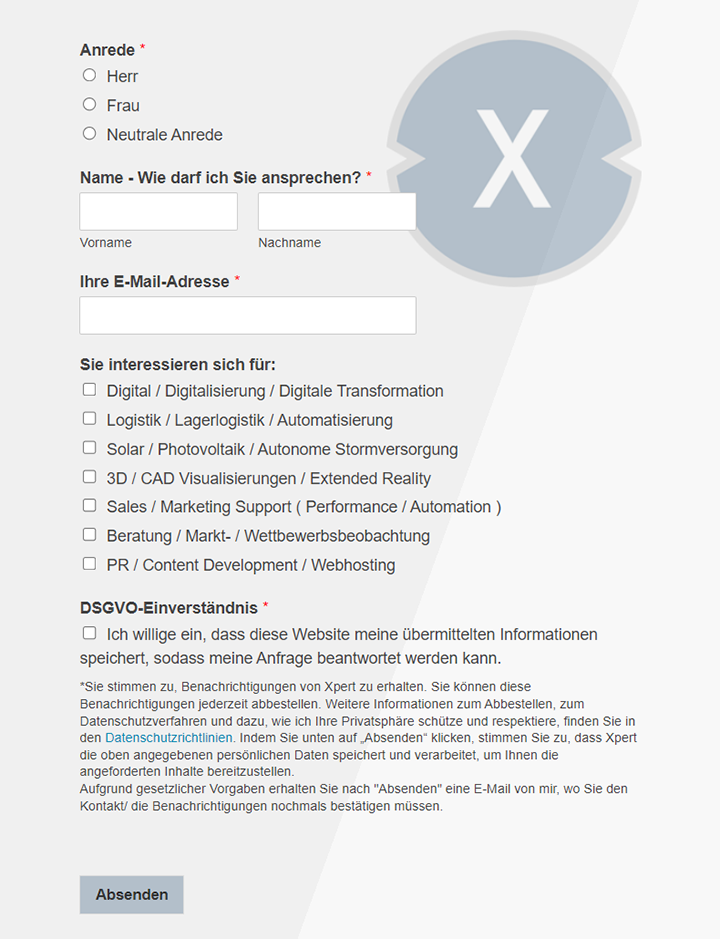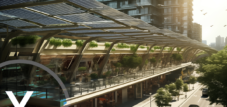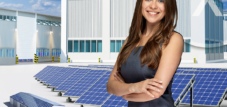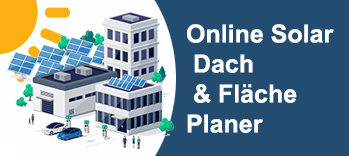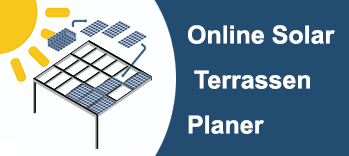Energetic alliance in city logistics: When last mile logistics meets solar roofs - the synergy of GIPV and sustainable delivery logistics
Language selection 📢
Published on: August 14, 2023 / Update from: August 14, 2023 - Author: Konrad Wolfenstein
Two unusual siblings: the synergy between Last Mile Logistics and Building -Corporate Photovoltaics (GipV) for sustainable energy supply
In a constantly changing world, in which the need for sustainable energy supply is becoming increasingly urgent, innovative technologies and solutions are focused on. Two such remarkable siblings, who are increasingly crystallizing as important actors in their respective areas, are the Last Mile Logistics and the building -integrated photovoltaics (GIPV). But how can these two apparently different areas be brought together to enable the optimization of solar systems on buildings, halls and houses? In this section we explore the exciting possibilities and potentials that result from the synergy of these unusual siblings.
Last Mile Logistics: The challenge of the last mile
Last Mile Logistics describes the decisive last step in the supply chain, in which the package or the goods are transported from the distribution center to the end customer. This area is of great importance, since it not only makes a significant share in the total costs of the supply chain, but also brings enormous logistical challenges. Coping with the “last mile” often requires the use of transport vehicles, which should not only be efficient, but also environmentally friendly in order to minimize the negative effects on the environment.
The building -integrated photovoltaic (GIPV): One step towards sustainable energy
The building -integrated photovoltaic (GIPV) is an innovative technology in which photovoltaic modules are integrated directly into the building envelope in order to create renewable energy. In contrast to conventional solar modules, which are installed on roofs or open spaces, the GIPV offers the advantage that it is aesthetically more appealing and requires fewer additional areas. This enables it to contribute to more efficient use of room resources and enable sustainable energy supply in urban areas.
The synergy between Last Mile Logistics and GipV: potential and advantages
The connection between Last Mile Logistics and GipV opens up a wealth of potential and advantages for a sustainable future:
1. Emission reduction and environmental protection
The CO2 footprint of the logistics sector can be significantly reduced by using emission-free or emission-free delivery vehicles in the Last Mile Logistics, which are operated with renewable energy from the GIPV systems on the buildings.
2. Efficient use of energy
GipV technology can not only cover the electricity requirement for the operation of logistics centers and distribution facilities, but also generate excess energy that can be fed into the network or can be used for other purposes.
3. Space savings
The integration of solar modules into the building envelope enables more efficient use of space, since no additional areas are required for separate solar modules. This is particularly advantageous in urban areas where space is often limited.
4. Image improvement
Companies that rely on environmentally friendly logistics and make their contribution to renewable energy generation through GipV systems can strengthen their sustainable image and be perceived as a pioneer in their industries.
5. Cost savings
The use of renewable energies from GipV sources can lead to cost savings in energy costs in the long term and at the same time reduce the dependency on fossil fuels.
The challenges in the supply chain
The synergy between Last Mile Logistics and Building Convested Photovoltaics (GIPV) offers a fascinating way to deal with the challenges in the supply chain and at the same time contribute to sustainable energy supply. The combination of these unusual siblings can help reduce the environmental impact of the logistics industry, use resources more efficiently and to take an important step towards a sustainable future. By implementing these innovative approaches together, they can promote a green and sustainable energy supply that offers long -term advantages for the environment and society.





